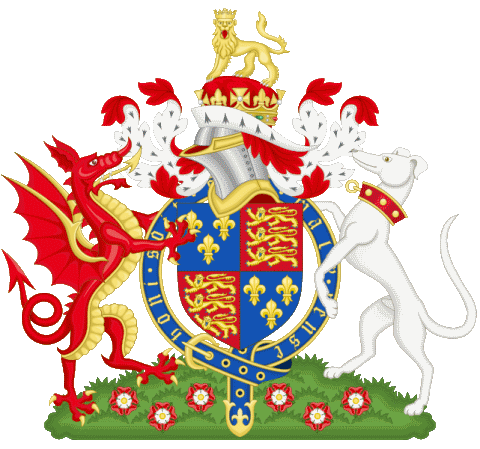威尔士的红龙

虽然威尔士是英国不可分割的一部分,但在国旗或联盟旗上没有代表,更多的是被称为联盟杰克。
威尔士人自豪而古老的战斗标准是 "红龙"( Y Ddraig Goch 如同任何古代符号一样,龙的外观多年来一直被调整和改变,因此存在几种不同的变化。
See_also: 福尔柯克之战 穆尔目前的国旗是在1959年正式采用的,它是基于自都铎时代以来英国国王和王后使用的一个古老的皇家徽章。 几个世纪以来,红龙本身就与威尔士有关,因此,该旗帜被称为是最古老的国旗,目前仍在使用。 但为什么是龙? 这个特定问题的答案已在历史和神话中消失。

罗马骑兵德拉科
一个传说回顾了四世纪时罗马-英国士兵在他们的旗帜上携带红龙(Draco)前往罗马,但它可能比这还要早。
据认为,阿伯弗洛的威尔士国王在五世纪初首次采用了龙,以象征他们在罗马人退出英国后的权力和权威。 后来,大约在七世纪,它被称为Cadwaladr的红龙,655年至682年的格温尼德国王。
Geoffrey of Monmouth在他写于1120年至1129年间的Historia Regum Britanniae中,将龙与亚瑟的传说联系起来,包括亚瑟的父亲Uther Pendragon,他的名字被翻译成龙头。 Geoffrey的叙述还讲述了Myrddin(或Merlin)关于红龙和白龙之间长期斗争的预言,象征着威尔士人(红龙)和白龙之间的历史斗争。龙)和英国人(白龙)。
See_also: 征收者然而,使用龙来象征威尔士的最古老的记录来自于历史学家Nennius在820年左右撰写的《布列塔尼历史》(Historia Brittonum)。
据说在1346年的克雷西战役中,红龙甚至被用作英国的标准,当时威尔士的弓箭手身着他们心爱的绿色和白色,在击败法国人的过程中发挥了如此关键的作用。

亨利七世的纹章,其中威尔士龙支撑着英格兰的皇家徽章
尽管奥文-格林德沃在1400年举起了龙标,作为反抗英国王室的象征,但龙是由都铎家族带到英国的,这个威尔士王朝在1485年至1603年期间占据了英国王位。 它标志着他们直接来自威尔士的一个贵族家族。 旗帜上的绿色和白色条纹是都铎王朝的第一位国王亨利七世添加的、代表其标准的颜色。
在亨利八世统治时期,绿白相间背景的红龙成为皇家海军舰艇上最受欢迎的标志。
 作为威尔士的国旗,红龙似乎在二十世纪初重新受到欢迎,当时它被用于1911年威尔士亲王爱德华的卡纳冯宣誓仪式。 然而,直到1959年,它才被正式承认为该国的国旗。
作为威尔士的国旗,红龙似乎在二十世纪初重新受到欢迎,当时它被用于1911年威尔士亲王爱德华的卡纳冯宣誓仪式。 然而,直到1959年,它才被正式承认为该国的国旗。
现在,红龙在整个威尔士的公共和私人建筑上骄傲地飘扬,每隔一年,当两个国家在被称为特威克纳姆的橄榄球战场上进行 "历史性的斗争 "时,仍有数千人越过边界进入英格兰。 威尔士人、妇女和儿童携带龙,象征着对其历史和文化的自豪。

